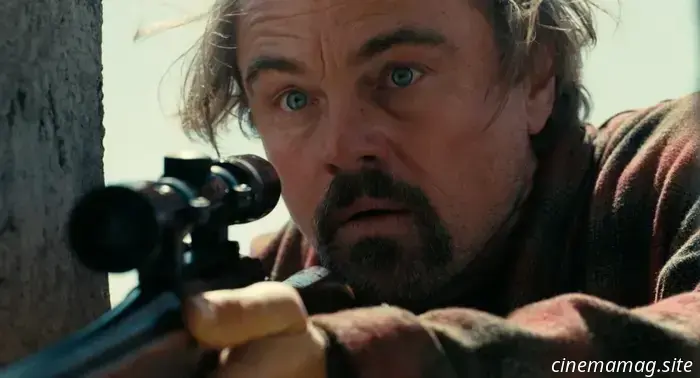
One Battle After Another Review: Paul Thomas Anderson and Leonardo DiCaprio Celebrate a New Revolution
Viva la revolución! Shouted by the former radical turned average Joe, Bob Ferguson (Leonardo DiCaprio), this phrase represents one of the most memorable lines in One Battle After Another and arguably serves as its thesis. However, in this engaging and dynamic new film by Paul Thomas Anderson, it's important to delve into the subtleties, nuances, and implications of that declaration. With the Spanish phrase retained and its connections to the Cuban Revolution, it reflects the film’s connection to the Hispanic culture of the western United States. But which revolución are we really discussing, and is Bob, who is struggling, genuinely sincere or charmingly deluded?
A key indicator is that One Battle After Another unfolds not merely in a heightened cinematic realm, but in an alternate reality. Although it draws from the author's 1990 novel Vineland, it doesn't fully embody a Pynchonian atmosphere, unlike Anderson’s more accurate adaptation of Inherent Vice. The opening sequence sets the stage and provides early dramatic context: the French 75, a well-trained leftist militant group, plans to audaciously free undocumented migrants from a detention center; included among them are DiCaprio, under his former alias “Ghetto Pat,” the charismatic Perfidia (Teyana Taylor), and her leader Deandra (Regina Hall). Col Steven J. Lockjaw (Sean Penn) lies in wait, with Anderson cleverly contrasting his military actions with the conspicuous bulge in his pants.
Political urgency, contemporary cultural debates, and unabashedly aroused espionage agents: this is what Anderson tackles in One Battle After Another, and based on my initial viewing, he has crafted a largely exhilarating populist action film with some of his most impressive cinematic techniques and cohesive storytelling, though it lacks the dark beauty and depth of his finest works. The characters we are encouraged to support are appropriately inspiring and motivating; the antagonists are despicable white supremacist thugs dressed in both executive attire and camouflage; and the moral lines are sometimes as clear as in Star Wars, which Anderson seems to adapt carefully (even incorporating martial arts references). Nevertheless, the film succeeds and resonates well as an exciting (and hopefully appealing) commercial venture by effectively establishing these narrative essentials and getting the storytelling gears turning, driving down the twisted desert highways.
After their nearly romantic meeting during the first mission of the French 75, Perfidia and Lockjaw enter a surprising romantic relationship, with Perfidia both politically repulsed and sexually intrigued, perhaps with an ulterior motive to infiltrate his operation as a double agent. As Pat remains her main partner, Perfidia’s subsequent pregnancy clouds the identity of the father, and her arrest by authorities—though she miraculously escapes—forces the French 75 to quickly adopt new identities.
Thus, Pat takes on the somewhat pathetic name Bob, a single father and guardian of Perfidia’s daughter Willa, portrayed by newcomer Chase Infiniti within the film’s main timeline, which appears to be set in the present. Lockjaw re-emerges after gaining intel on the French 75’s location, driven primarily by his desire to capture Willa, which may also lead him to find Perfidia.
Initially aggressive in the film’s opening chapter with their Weather Underground-like tactics and aspirations for a utopian societal transformation, the group now primarily aims to survive, or if not, to face their fate with dignity—even if that means martyrdom, which may immortalize them as future icons. In contrast to their dismal current situation, the decline of the modern United States into fascism (depicted in the film mainly through raids reminiscent of Operation Safeguard) renders their past idealistic struggles seemingly irrelevant, illustrated poignantly as their ally Sensei Sergio (Benicio del Toro) leads the disoriented Bob to safety, his past as a guerrilla fighter swallowed by the haze of his memories. This steadicam-driven scene—one of the film's most thrilling moments—takes place against the backdrop of the migrants he shelters, also fleeing from ICE. With such vivid imagery linked to the alarming reality of Trump’s second term, Anderson's connection to the challenges faced by the French 75 runs the risk of appearing arbitrary, adding yet another layer of illogic.
As the film approaches its conclusion, a key aspect emerges: a contemplation on the bonds of parenthood, whether through biological or chosen families. Willa symbolizes the latest generation, marked by clearer political ideals and revised perspectives on sex and gender, all set to the sound of Shek Wes’s “Mo Bamba” rather than Bob’s cherished Steely Dan. The once vibrant French 75, representing New Left ideals that encompassed his life's purpose, becomes spiritually “dead”—likely even before it was physically extinguished—once Lockjaw identifies them again. This is poignant, and One Battle After Another truly elevates itself beyond its vehicular action sequences once it focuses on this essential truth.
One Battle After Another
Other articles
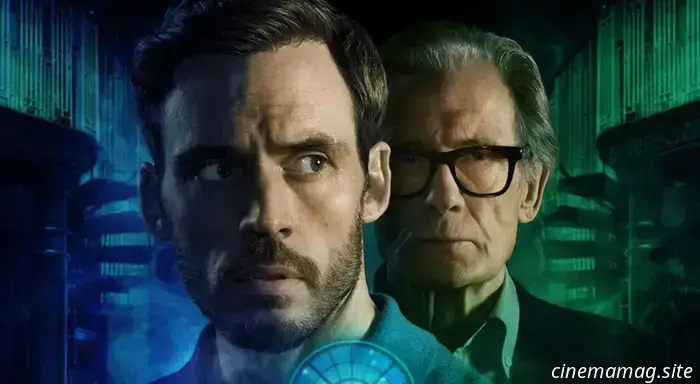 Prime Video has released the trailer for Harlan Coben's Lazarus, featuring Sam Claflin and Bill Nighy.
Prime Video has unveiled a poster and trailer for the forthcoming thriller series Harlan Coben’s Lazarus. Sam Claflin plays Joel, a man who starts to encounter inexplicable and unsettling experiences after his father's suicide, becoming involved in a string of cold-case murders while investigating his father's recent death and the murder of […]
Prime Video has released the trailer for Harlan Coben's Lazarus, featuring Sam Claflin and Bill Nighy.
Prime Video has unveiled a poster and trailer for the forthcoming thriller series Harlan Coben’s Lazarus. Sam Claflin plays Joel, a man who starts to encounter inexplicable and unsettling experiences after his father's suicide, becoming involved in a string of cold-case murders while investigating his father's recent death and the murder of […]
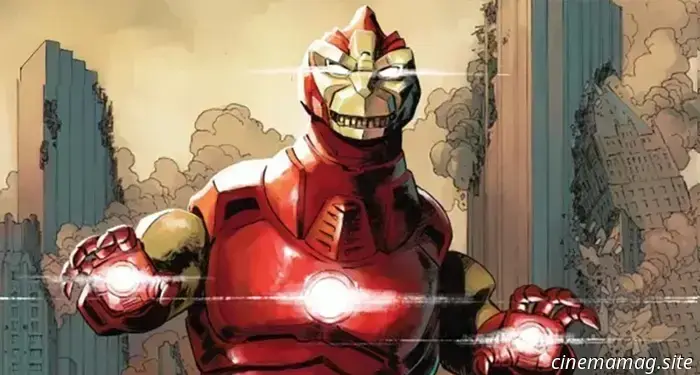 Godzilla Destroys the Marvel Universe #3 - Comic Book Teaser
The King of the Monsters extends his rampage on Wednesday with the launch of Godzilla Destroys the Marvel Universe #3, and you can view the official preview of the issue below... As Godzilla's wave of destruction reaches the shores of Madripoor, the X-Men step in to defend the planet! As they battle […]
Godzilla Destroys the Marvel Universe #3 - Comic Book Teaser
The King of the Monsters extends his rampage on Wednesday with the launch of Godzilla Destroys the Marvel Universe #3, and you can view the official preview of the issue below... As Godzilla's wave of destruction reaches the shores of Madripoor, the X-Men step in to defend the planet! As they battle […]
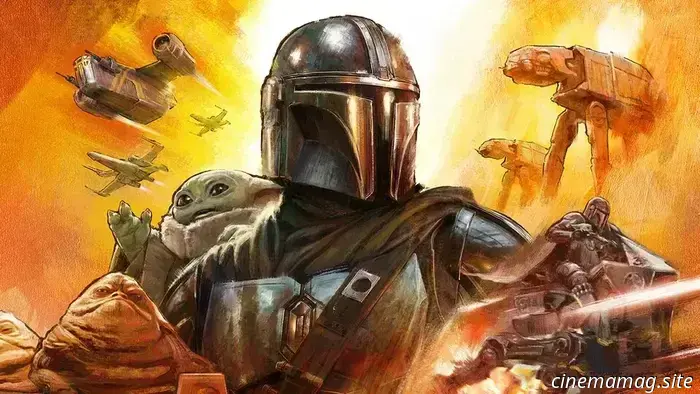 Star Wars makes its comeback to theaters with a trailer for The Mandalorian and Grogu.
Disney and Lucasfilm have unveiled the initial teaser trailer for Star Wars: The Mandalorian and Grogu, the feature film that emerges from the successful Star Wars series, The Mandalorian. The Mandalorian and Grogu follows the third season of The Mandalorian, which witnessed bounty hunter Din Djarin and his foundling Grogu being reunited after assisting Mandalorian rebels and his Children of the […]
Star Wars makes its comeback to theaters with a trailer for The Mandalorian and Grogu.
Disney and Lucasfilm have unveiled the initial teaser trailer for Star Wars: The Mandalorian and Grogu, the feature film that emerges from the successful Star Wars series, The Mandalorian. The Mandalorian and Grogu follows the third season of The Mandalorian, which witnessed bounty hunter Din Djarin and his foundling Grogu being reunited after assisting Mandalorian rebels and his Children of the […]
-4K-Ultra-HD-Review.jpg) Corpse Bride (2005) - Review in 4K Ultra HD
Corpse Bride, 2005. Directed by Tim Burton and Mike Johnson. Stars the voice talents of Johnny Depp, Helena Bonham Carter, Emily Watson, Christopher Lee, Albert Finney, Michael Gough, Tracey Ullman, Joanna Lumley, Richard E. Grant, and Paul Whitehouse. SYNOPSIS: A young man on the brink of marriage finds himself unexpectedly transported to the underworld, where he unintentionally […]
Corpse Bride (2005) - Review in 4K Ultra HD
Corpse Bride, 2005. Directed by Tim Burton and Mike Johnson. Stars the voice talents of Johnny Depp, Helena Bonham Carter, Emily Watson, Christopher Lee, Albert Finney, Michael Gough, Tracey Ullman, Joanna Lumley, Richard E. Grant, and Paul Whitehouse. SYNOPSIS: A young man on the brink of marriage finds himself unexpectedly transported to the underworld, where he unintentionally […]
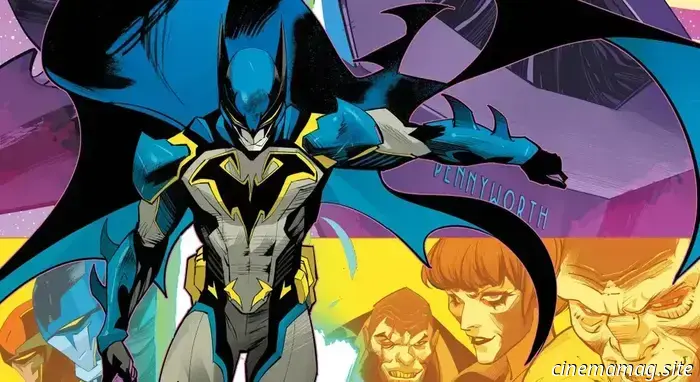 Immortal Legend Batman #2 - Preview of the Comic Book
DC Comics will launch Immortal Legend Batman #2 on Wednesday, and you can check out the official preview of the issue below... The Immortal Legend Batman's abilities will be challenged as he seeks a new kind of Shadows, which takes him to the asteroid base of space pirates who determine the outcome of their [...]
Immortal Legend Batman #2 - Preview of the Comic Book
DC Comics will launch Immortal Legend Batman #2 on Wednesday, and you can check out the official preview of the issue below... The Immortal Legend Batman's abilities will be challenged as he seeks a new kind of Shadows, which takes him to the asteroid base of space pirates who determine the outcome of their [...]
One Battle After Another Review: Paul Thomas Anderson and Leonardo DiCaprio Celebrate a New Revolution
Viva la revolución! This rallying cry, shouted by the former radical turned ordinary man Bob Ferguson (Leonardo DiCaprio), serves as the most striking line in One Battle After Another and can be seen as its central theme. However, in this engaging and dynamic new film by Paul Thomas Anderson, it remains valuable to examine the subtleties, hidden currents, and implications of that declaration. With the
